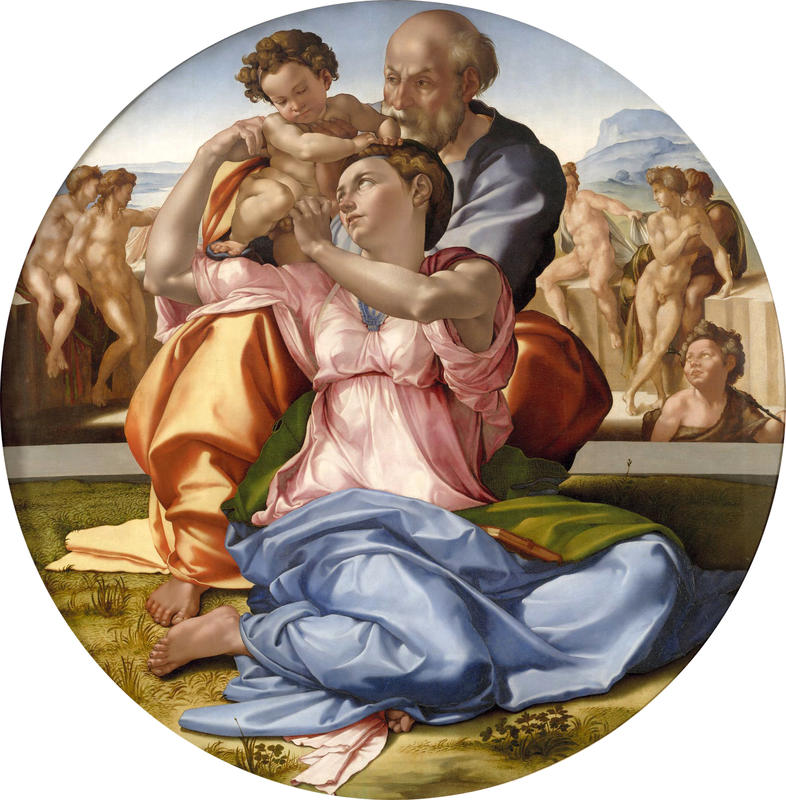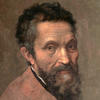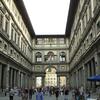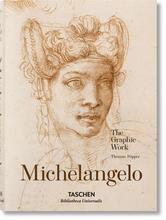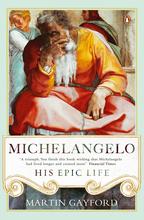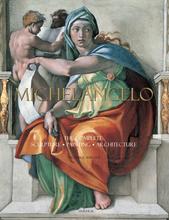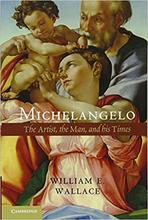More about Doni Tondo
- All
- Info
- Shop

Sr. Contributor
For a guy who hated painting, Michelangelo did a pretty good job on this one.
According to Michelangelo, painting was one of the inferior art forms. Clearly, sculpture was way more refined and worthy of his artistic efforts. Just look at his David – sweet, marble, male perfection. But with a clear rivalry against Leonardo da Vinci that even sparked a contest to paint a mural for Florence’s town hall, I guess an artist’s gotta do what an artist’s gotta do.
There was much at stake for artists who received public commissions for both the Church and the government, but private commissions also garnered fame and fortune. Michelangelo had a pretty illustrious fan base, including nine different Catholic Popes, as well as the most rich and powerful families in Renaissance Italy. And when a member of a family like the Strozzis wants you to paint something, best believe you’re gonna paint something. The Strozzis were the sworn enemies of Florence’s other big banking family, the Medicis, who had artists like Donatello in their fat, back pockets. So having art specially made by the best artists of the time provided many bragging rights.
The tondo, which is just a fancy name for a round painting, was the typical format for a privately commissioned artwork, and Michelangelo probably painted this one to celebrate the marriage of Agnolo Doni to Maddalena Strozzi. The couple also had Raphael paint their portraits a few years after Michelangelo completed this painting. But this tondo is particularly significant to the holy grail of Renaissance art history because it is the only surviving, finished panel painting by Michelangelo. Michelangelo had a bad habit of rarely completing what he started...I guess we have that in common. What’s even cooler is that this painting is still in its original, 500-year-old frame. The frame is delightfully creepy because it includes carved heads of Jesus Christ and the four prophets who who predicted the coming of the Messiah. Oh, did I mention that Michelangelo also designed the frame? Show-off.
The theory that Michelangelo painted this tondo as a wedding gift makes sense because Renaissance people associated tondos with domestic ideals. Basically, they would hire artists to paint pictures of how they envisioned their best selves – maybe a little bit like a contemporary vision board, except made by a world-class artist and not a pre-teen girl using cut-out magazine images. So I guess if you’re one of the most powerful families in Renaissance Florence, you can envision yourself as grandly as you want. But striving to be as great as THE Holy Family? As if. It’s especially hilarious because, as Mary looks lovingly at baby Jesus, Joseph looks mad as hell. Maybe he’s thinking about how he’s not really his wife’s baby daddy, but that’s neither here nor there.
Another more humble (and depressing) theory is that the couple wanted the Holy Family’s protection in their marriage after the death of their first child. Sadly, Agnolo and Maddalena had four children whom they each named Giovanni Battista and who all died shortly after birth. The inclusion of baby Saint John the Baptist, called Giovanni in Italy, might reference these trying times.
Sources
- Andrews, Evan. “9 Things You May Not Know About Michelangelo.” The History Channel. March 6, 2015. http://www.history.com/news/9-things-you-may-not-know-about-michelangelo. Accessed June 5, 2017.
- Finnan, Vincent. “Michelangelo’s Doni Tondo.” Italian Renaissance Art. http://www.italian-renaissance-art.com/Doni-Tondo.html. Accessed June 5, 2017.
- Hartt, Frederick. The Metropolitan Museum of Art Vol. 4, The Renaissance in Italy and Spain New York: The Metropolitan Museum of Art, 1988.
- Hartt, Frederick, and David G. Wilkins. History of Italian Renaissance Art: Painting, Sculpture, Architecture. Upper Saddle River, NJ: Pearson Prentice Hall, 2007.
- Jones, Jonathan. “And the winner is…” The Guardian. October 22, 2002. https://www.theguardian.com/culture/2002/oct/22/artsfeatures.highereduc…. Accessed June 7, 2017.
- Michelangelo.org. “Doni Tondo, by Michelangelo.” Michelangelo.org. http://www.michelangelo.org/doni-tondo.jsp. Accessed June 5, 2017.
- Michelangelo: The Complete Works. http://www.michelangelo-gallery.org/. Accessed June 7, 2017.
- Sorabella, Jean. “Painting the Life of Christ in Medieval and Renaissance Italy.” The Heilbrunn Timeline of Art History. The Metropolitan Museum of Art. June 2008. http://www.metmuseum.org/toah/hd/chri/hd_chri.htm. Accessed June 5, 2017.
- Uffizi Gallery Museum. “Doni Tondo by Michelangelo.” Guide to Uffizi Gallery Museum. http://www.uffizi.org/artworks/doni-tondo-by-michelangelo/. Accessed June 5, 2017.
Featured Content
Here is what Wikipedia says about Doni Tondo
The Doni Tondo or Doni Madonna is the only finished panel painting by the mature Michelangelo to survive. (Two other panel paintings, generally agreed to be by Michelangelo but unfinished, The Entombment and the so-called Manchester Madonna, are both in the National Gallery in London.) Now in the Uffizi in Florence, Italy, and still in its original frame, the Doni Tondo was probably commissioned by Agnolo Doni to commemorate his marriage to Maddalena Strozzi, the daughter of a powerful Tuscan family. The painting is in the form of a tondo, meaning in Italian 'round', a shape which is frequently associated during the Renaissance with domestic ideas.
The work was probably created during the period after Doni's marriage in 1503 or 1504, and before the Sistine Chapel ceiling frescoes were begun in 1508. The Doni Tondo portrays the Holy Family (the child Jesus, Mary, and Joseph) in the foreground, along with John the Baptist in the middle-ground, and contains five nude male figures in the background. The inclusion of these nude figures has been interpreted in a variety of ways.
Check out the full Wikipedia article about Doni Tondo

